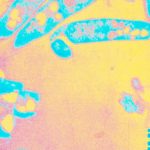Lien vers Pubmed [PMID] – 34396095
Lien DOI – lqab07010.1093/nargab/lqab070
NAR Genom Bioinform 2021 Sep; 3(3): lqab070
Current evolutionary scenarios posit the emergence of Mycobacterium tuberculosis from an environmental saprophyte through a cumulative process of genome adaptation. Mycobacterium riyadhense, a related bacillus, is being increasingly isolated from human clinical cases with tuberculosis-like symptoms in various parts of the world. To elucidate the evolutionary relationship between M. riyadhense and other mycobacterial species, including members of the M. tuberculosis complex (MTBC), eight clinical isolates of M. riyadhense were sequenced and analyzed. We show, among other features, that M. riyadhense shares a large number of conserved orthologs with M. tuberculosis and shows the expansion of toxin/antitoxin pairs, PE/PPE family proteins compared with other non-tuberculous mycobacteria. We observed M. riyadhense lacks wecE gene which may result in the absence of lipooligosaccharides (LOS) IV. Comparative transcriptomic analysis of infected macrophages reveals genes encoding inducers of Type I IFN responses, such as cytosolic DNA sensors, were relatively less expressed by macrophages infected with M. riyadhense or M. kansasii, compared to BCG or M. tuberculosis. Overall, our work sheds new light on the evolution of M. riyadhense, its relationship to the MTBC, and its potential as a system for the study of mycobacterial virulence and pathogenesis.

